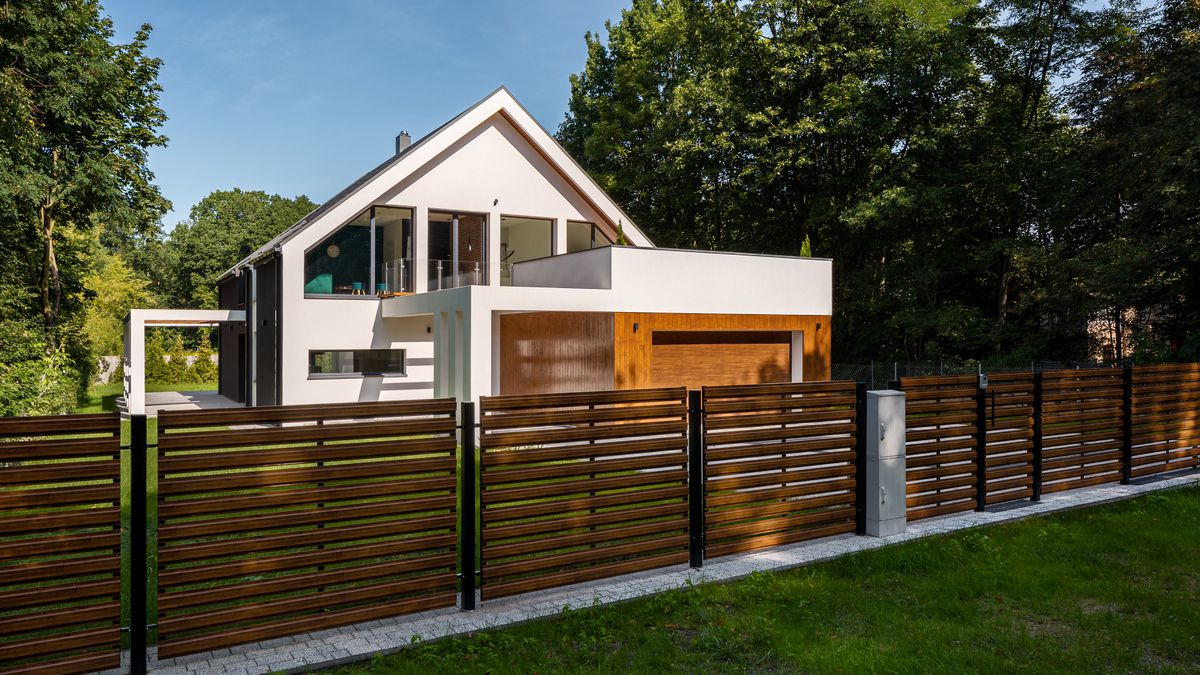There are many solutions to build a garden fence that fulfills its role and is aesthetic at the same time, but be careful to follow the applicable rules!
Garden fence rules
According to Section 647 of the Civil Code, every owner has the right to erect a fence on his property. However, certain standards regarding the height, materials used and the color of the fence must be respected, these are usually detailed in local urban plan (PLU) your village. All this with the aim of respecting urban aesthetics, safety and good neighbourhood.
Unless there are specific local regulations, the fence height must be standard a maximum of 2.60 meters in municipalities with up to 50,000 inhabitants and 3.20 meters in municipalities with up to 50,000 inhabitants and more. For fences whose height exceeds 2 meters, prior notification of works is often required, especially in classified or protected areas.
The location of the fence on the boundary of the property is also important, unless the neighbors agree otherwise, especially for adjoining fences where rights are shared.
Determining your fencing needs
First, think about your limitations and needs regarding the garden fence. If you want to prioritize protection and security, choose tall, solid fences such as walls or sturdy mesh. Solid panels, dense hedges or privacy fences are effective for privacy. If the main goal is aesthetic and restrictive, lighter, vegetal and/or decorative options may be appropriate.
It is also important to define your budget, evaluate the installation work as well as the maintenance and lifespan of the fence. Environmental impact can also be considered, favoring natural materials that support biodiversity.
Different types of fences and their materials
There are a large number of fence styles that include different materials and suit everyone’s needs more or less well. We offer you the main ones here to help you choose.
Flexible or rigid metal mesh

Wire mesh is a common choice for garden fencing because it is robust and versatilewe distinguish 2 types:
- Flexible fence : is the most economical fencing solution. It is easy to install and is suitable for different garden configurations, including, for example, the delimitation of different spaces in the same garden: children’s games, vegetable garden, chicken coop and other enclosures for animals (doubled with an electric fence if necessary);
- Solid fence: when it comes to it, more expensive, it is ideal for strengthening security because it is extremely resistant, no penetration is possible (except from above, of course like any fence).
Aesthetics and functionality can be improved by adding a flexible protective screen, integrating PVC slats or strands of artificial hedge that limit the view and reduce the impact of the wind.
Panels and fences
Panels and palisades are effective fences for an average budget, they come in a variety of materials:
- Wooden panels they bring natural charm and are eco-friendly at the same time. They are available in different species such as cedar, pine or cypress and can adapt to all garden styles. On the other hand, wood requires regular treatment to resist humidity, UV radiation and insects in the long term;
- PVC panels and composite materials represent a good solution for a maintenance-free fence. They also provide good protection from wind and prying eyes. Resistant to fading, cracking and mildew, they will be perfect in all climates!
- Metal, steel or aluminum panels combine robustness, protection, safety and longevity. They are especially suitable for modern gardens, sometimes refined, sometimes more complex and artistic. In terms of maintenance, this will basically involve refinishing the paint to maintain the protective layer against corrosion and rust.
Stone, brick and concrete fence walls

“Hard” walls, stone, brick or concrete are much better fencing options that combine sophistication and flawless strength! These fences are exhibited in different textures and colors for infinite rendering.
Natural stone walls, for example, are rather classic. If the brick walls are more traditional in their raw state, they can be painted for originality. Concrete, on the other hand, is extremely versatile and can be shaped, colored and textured to fit into any decorative setting.
Everybody is sustainable and economical solutions in the long run, although implementation work (which requires a professional level) and initial costs can be significant.
Hedges for dividing plants

Hedges, made up of plants and shrubs, are ideal for creating a natural barrier while beautifying the garden. For example, cherry laurel, thuja, boxwood or beech are excellent choices for quick acquisition dense separation that dampens the wind and guarantees privacy. For more floral department, GoldieTHE WeigelorHydrangea they bring a touch of color with their bright flowers. It is best to choose a mixed hedge, combining evergreen shrubs and visually attractive flowering plants throughout the year.
This type of plant hedge requires some time to achieve sufficient coverage. even if you choose fast growing plants. If it forms an embankment, the hedge will allow animals, including children, to pass through, especially at ground level. It will also need minimal maintenance between watering (especially at the beginning) and regular pruning to keep its shape and prevent it from overgrowing in the neighborhood or on public roads.

